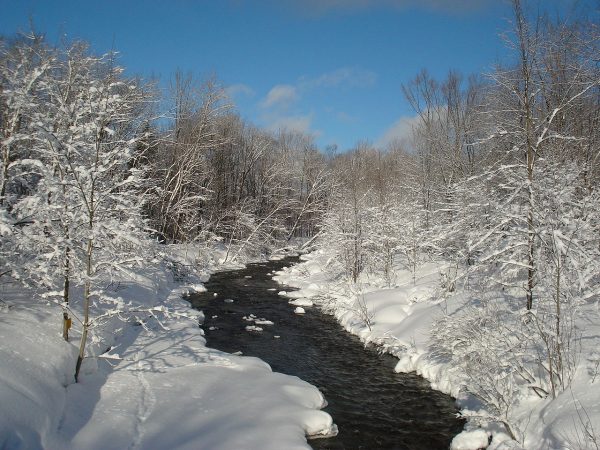If you can brave the frigid temperatures, winter can be a great season for fly fishing your local rivers and streams. Trout are well-known for being cold weather fish, making the chilly months an ideal time of year to pull on your waders and tie on a fly.
Before you head out for winter fly fishing, there are a few things you’ll want to keep in mind to ensure you get on the fish and stay safe. Here are four tips for fly fishing for trout this winter.
Dive Deep
In winter, trout will situate near the river bottom and don’t tend to move more than a few inches from their holding spots. This also means they won’t move more than a few inches to grab your fly. To capitalize on this and ensure those picky fish make the effort to bite, fish your flies deep and slow. A small streamer, fished upstream like a nymph with an occasional twitch, may generate enough interest to get those trout moving.
Low-Vis
During the winter months, streams are typically very low and clear, so you’ll want to make your presentation as appealing as possible by reducing the visibility of your line. To do this effectively, keep your tippet as long and light as you can by using fluorocarbon. You may even need to go to 6X or 7X with smaller flies to make sure you can still cast them efficiently. Bonus Tip: Mirage Fluorocarbon tippet is a fan-favorite among the fly fishing community, due to its incredibly low visibility in the water.
Skinny Water Changes Things
In tailwaters and spring creeks where the water temperatures are a little more stable, you may find that the trout are rising to feed on midges throughout the day. Early mornings, though, are often times surprisingly productive where this change in trout behavior is concerned. Keep a few small midge patterns on-hand and you just might be pleasantly surprised by the big fish that will take such a small fly.
Know Your Waters
Perhaps the biggest component of successful winter fly fishing is being able to read the waters accurately. For instance, water that is almost, but not quite, still typically indicates a large pool. Here, you’ll tend to find a fair number of fish rising in the middle or tail of these pools. Bonus Tip: Take notes—mental or otherwise—of the topography of your local rivers as you fish them throughout the year and you’ll be in good shape to know where to find the pools.
Photo credit: Wikimedia








